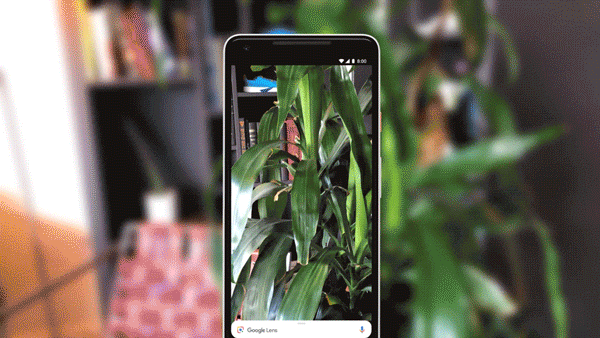I/O 2018 the annual conference about all things Google, is in full swing for the next three days, and a number of announcements likely to shake up the marketer’s job description have come out of it already. Here’s what you need to know.
Google Lens Goes Shoppable
Though Google Lens, the company’s augmented reality camera app, has been publicly available for a year, Google is fully integrating the app into Android phone cameras, and adding a slew of new features as well.
Most prominent of Google’s additions to the Lens app is its real-time recommendation and shopping features. In the next few weeks, Android users will be able to scan objects like books, clothing and furniture to see reviews of the objects posted online, as well as a fully shoppable list of similar products.
“Much like voice, we see vision as a fundamental shift in computing and a multi-year journey,” said Rajan Patel, director of Google Lens. “We’re excited about the progress we’re making with Google Lens features that will start rolling out over the next few weeks.”

Though Google has not yet announced any plans to monetize the feature, it seems likely that marketers will be able to promote their own products through Lens in much the same way they can with Google search and Shopping.
App Ads Get Easier, Smarter
For app marketers, Google announced a trio of features designed explicitly to make ads for apps more effective.
The first allows app advertisers to retarget consumers with personalized content from the app itself, tying AdWords and app content together.
“70 percent of users decide whether to install an app based on how much they’ll use it,” said Sissie Hsiao, Google’s vice president of product and mobile app advertising. “To provide users more helpful information, we’ll launch a beta that allows developers to surface relevant app content within ads.”

For mobile games marketers, Google Play Instant is being expanded to allow users to play games directly through the ads themselves without needing to download anything or navigate through the Play store, easing the passage through the decision funnel.
Lastly, Google is standardizing its in-app ad viewability standards in conjunction with the IAB Tech Lab, cracking down on fraud and providing more reliable and scaleable measurement tools. Additionally, Google is providing native support for several rewarded-app metrics, including opt-in rate, consumption rate and rate of reward use.
“With these insights, developers can finetune their rewarded ads, addressing questions such as: ‘Do more users opt-in when the ad is shown after Level 1 or Level 4?’ ‘Which type of rewards do users prefer — coins or lives?’ ‘How often do people use their rewarded items?'” Hsiao writes.
Digital Wellbeing: Good For People, Bad For Marketers?
With concerns over the harmful effects of social platforms specifically and technology in general ever increasing, Google announced a substantive effort to ensure its tools promote “Digital Wellbeing,” which may well negatively affect the efforts of marketers.
“We’re dedicated to building technology that is truly helpful for everyone,” the company writes. “We’re creating tools and features that help people better understand their tech usage, focus on what matters most, disconnect when needed, and create healthy habits for the whole family.”
Google’s YouTube app already allows users to set custom “take a break” reminders, which will urge users to do something else after a set duration of video watching. Soon, however, this functionality will expand to all Android apps, which may well directly reduce the amount of ad impressions marketers can expect on Google phones.
Additionally, the Gmail Priority Inbox update will hide “nonessential communications,” such as marketing emails, to keep focus on personal communication. Furthermore, for both email and other apps that send notifications, Google will allow users to further customize when apps notify them, which, again, may lead to fewer ad impressions as users open apps less frequently.

